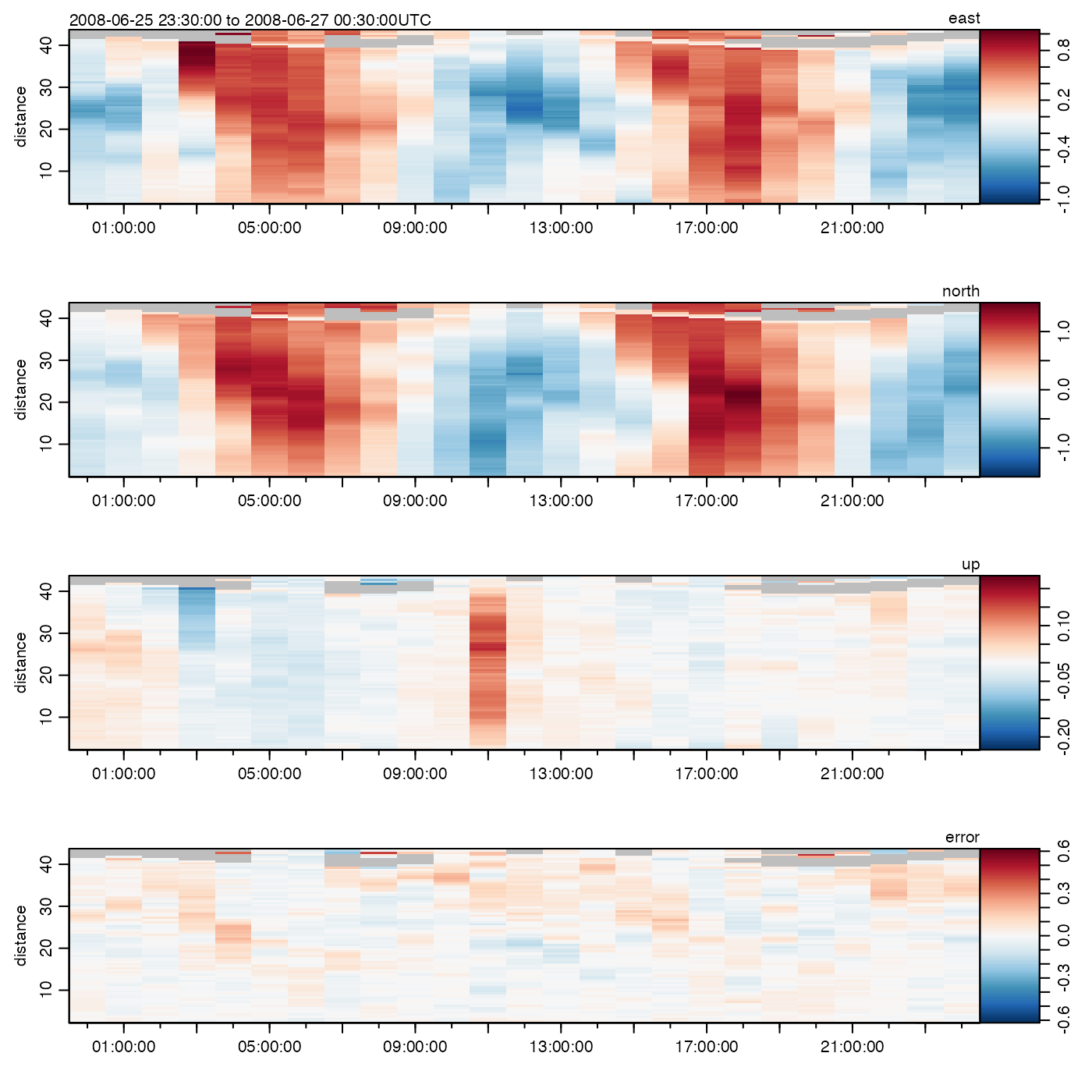Create an adp Object
Arguments
- time
of observations in POSIXct format
- distance
to centre of bins
- v
array of velocities, with first index for time, second for bin number, and third for beam number
- a
amplitude, a
raw()array with dimensions matchingu- q
quality, a
raw()array with dimensions matchingu- orientation
a string indicating sensor orientation, e.g.
"upward"and"downward"- coordinate
a string indicating the coordinate system,
"enu","beam","xy", or"other"
Value
An adp object.
Details
Construct an adp object. Only a basic
subset of the typical data slot is represented in the arguments
to this function, on the assumption that typical usage in reading data
is to set up a nearly-blank adp object, the data
slot of which is then inserted. However, in some testing situations it
can be useful to set up artificial adp objects, so the other
arguments may be useful.
See also
Other things related to adp data:
[[,adp-method,
[[<-,adp-method,
ad2cpCodeToName(),
ad2cpHeaderValue(),
adp,
adp-class,
adpAd2cpFileTrim(),
adpConvertRawToNumeric(),
adpEnsembleAverage(),
adpFlagPastBoundary(),
adpRdiFileTrim(),
adp_rdi.000,
applyMagneticDeclination,adp-method,
beamName(),
beamToXyz(),
beamToXyzAdp(),
beamToXyzAdpAD2CP(),
beamToXyzAdv(),
beamUnspreadAdp(),
binmapAdp(),
enuToOther(),
enuToOtherAdp(),
handleFlags,adp-method,
is.ad2cp(),
plot,adp-method,
read.adp(),
read.adp.ad2cp(),
read.adp.nortek(),
read.adp.rdi(),
read.adp.sontek(),
read.adp.sontek.serial(),
read.aquadopp(),
read.aquadoppHR(),
read.aquadoppProfiler(),
rotateAboutZ(),
setFlags,adp-method,
subset,adp-method,
subtractBottomVelocity(),
summary,adp-method,
toEnu(),
toEnuAdp(),
velocityStatistics(),
xyzToEnu(),
xyzToEnuAdp(),
xyzToEnuAdpAD2CP()
